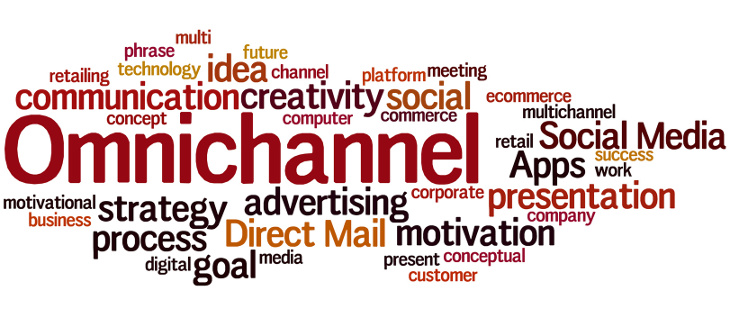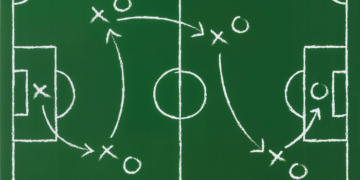About 55% of buyers purchase products from the same brands using more than one of the three available channels – online, offline and mobile. The development of technology has given us the opportunity to purchase any products from almost anywhere – all you need is an Internet connection. No wonder then that the market must adapt to completely new conditions.
Omnichannel or Multichannel
Until recently, the concept of “multichannel” ruled the trade – although it assumed the existence of several sales channels and communication with the client – including the mentioned channels: online, offline and mobile – they treated them autonomously. Of course, traditional stores have been present in the network for a long time, but their websites were more like a business card or a popular “offer magazine”. Today on such websites you can often make purchases with delivery to your home or chooe the option of picking up the product at your nearest store, contact the customer service office or make a refund or complaint of a previously purchased product. This is the result of a new concept – this time bearing the name “omnichannel”.
The Millennials and customer service
We owe this new trend to the development of technology and to the generation that is today the largest purchasing power in the world. According to the Gemius report (“E-commerce in Poland 2015”), 55% of Internet users make purchases online. As many as 60% of this group are people aged 15 – 34, or Generation Y, popularly referred to as “The Millennials”. They are open to new products and technology that value their time and often expect the “here and now” benefits. They use the Internet to compare the prices of the desired products, buy them in the most financially and time-wise manner and also state their opinions. This makes the seller face new challenges in the field of customer service.
The first challenge is the response time to the customer’s inquiry. This is associated with the greatest inconvenience that consumers face when shopping online or by mobile – the inability to see the product before purchasing it. Of course, consumer law allows you to return the product purchased online without giving a reason, so transactions of this type do not involve high risk. After all, the client prefers to avoid such a necessity and often tries to get to know the product as well as possible before buying it. A frequent problem is, for example, clarifying the size of clothes available in online stores or functions in the case of electronic equipment. A client who is deprived of the opportunity to try on or “touch” a product often asks many questions to employees of customer service departments. The success of the transaction may depend on the speed and quality of the response to such a query. A potential buyer may be discouraged by a long wait for a response or they may even go to the competition.
First of all, It is best to make sure that there should be as few questions as possible. The product described exhaustively and legibly – along with numerous photographs – will not leave any doubts with the customer. The second step is to improve customer service so that it can quickly, conveniently and at any time be able to answer any type of question.
The correct answer is another challenge for the seller. It should be remembered that in the vast majority of cases, purchases made online and through mobiles are associated with the lack of direct contact between the customer and the store. Thus, the communication method must be very precisely tailored to the client – so that he / she feels satisfied with the substantive value of the message, but also its form. Too concise and formal, but on the other hand, too loose or aggressive conversation with the client can cause that he will resign from shopping or will not make another transaction. What’s more – its negative opinion can also be publicly exhibited on the Internet. Often, customers – especially those dissatisfied – communicate with sellers in a public manner – for example through Facebook profiles. Poorly conducted communication may in this case cause that we will discourage not only the person reporting the problem, but also many “outsiders”. On the other hand – even with a very uncomfortable problem – well-conducted communication can bring very beneficial effects for the company. Research (carried out by Oracle) says clearly – bad customer service lowers annual revenue by an average of 20%. So let’s make sure that communication with the client runs professionally and effectively.
Paradoxically, it is not only communication with the customer that is crucial to properly handle their inquiry. An equally important element is proper communication between channels inside the company. The big challenge is to integrate them so as to ensure the greatest convenience for buyers of their products. A good example are systems of large bookstores or shops with electronic equipment. With the help of their websites, you can check the availability and price of goods in individual stores, book a specific title and pick up in person at the selected point or order a courier. In the latter case, store websites more and more often allow you to track your shipment and report related problems. A good, convenient idea for stores and their clients is, for example, storing warranty cards for purchased products on the user’s account in the online store.
The storage of files and data on the user’s account also involves one more challenge – controlling the client’s communication history with the company. This applies especially to very large enterprises, where dozens of people are serviced on a daily basis by many employees. It often happens that the client calls the service office, referring to a previously sent e-mail. Finding it in the archives and getting acquainted with the problem it contains may take a long time and adversely affect the caller’s opinion. It is not always possible to assign one employee to a specific problem, which forces companies to develop a system of transferring tasks and the transferring of previous communication with the client.
It is worth mentioning that although the appearance of the omnichannel model can be associated with people aged 15-34 and their proficiency in the field of the Internet, purchases made by them and their potential contact with companies, they are not the only social group which you should focus your attention on while conducting effective communication with clients. You still need to remember people who buy in a traditional way and problems with the goods or services they provide personally by phone or email. Therefore, when implementing the latest technologies supporting the service of a modern customer, you should not give up on existing forms of contact too quickly, and it is best to use tools that combine all these functions.
Human factor vs. technology
As you can see, professional customer service is not only the result of the “human factor”, but it is also limited by technological issues. On the other hand comes Unified Factory Easy. Using this system allows you to approach each client in an individual way. The conversation archive allows you to quickly familiarize yourself with the existing problems of each client and quickly outline the current status of the employee. In addition, it allows multi-channel connection between the consumer and the seller. The customer can choose as many as four channels – telephone, e-mail, livechat and Facebook Messenger, thanks to which he can contact the company in a convenient way that is comfortable for him. The seller handles them all through one application, thanks to which he can react immediately and answer quickly, thus dealing with each of the above-mentioned challenges.
In times of “omnichannel” the customer first stands in a central position in relation to all sellers. They must constantly control the prices – both their own and the competition and provide technological facilities on their websites – from return forms to the possibility of ordering a courier or picking up the goods at a selected stationary store. The customer can move to the competition site in a few seconds and take advantage of better conditions. In this situation, proper customer service is crucial for the entire company. Fortunately, as you can see, adapting to such conditions does not have to be difficult at all.





